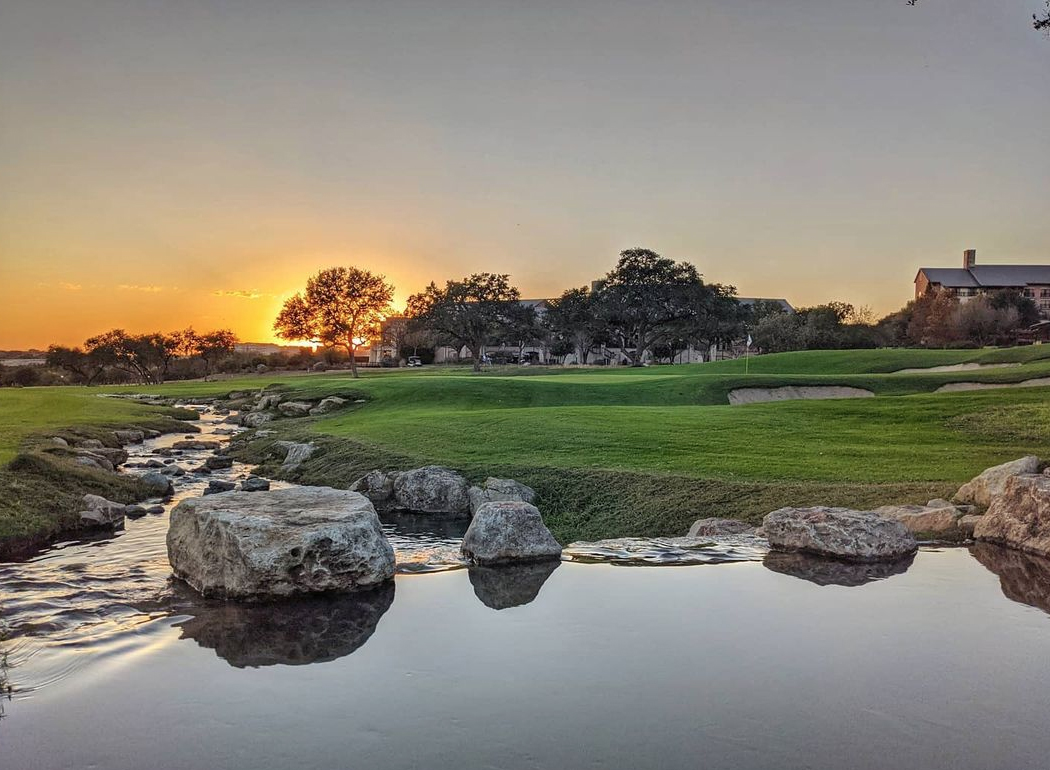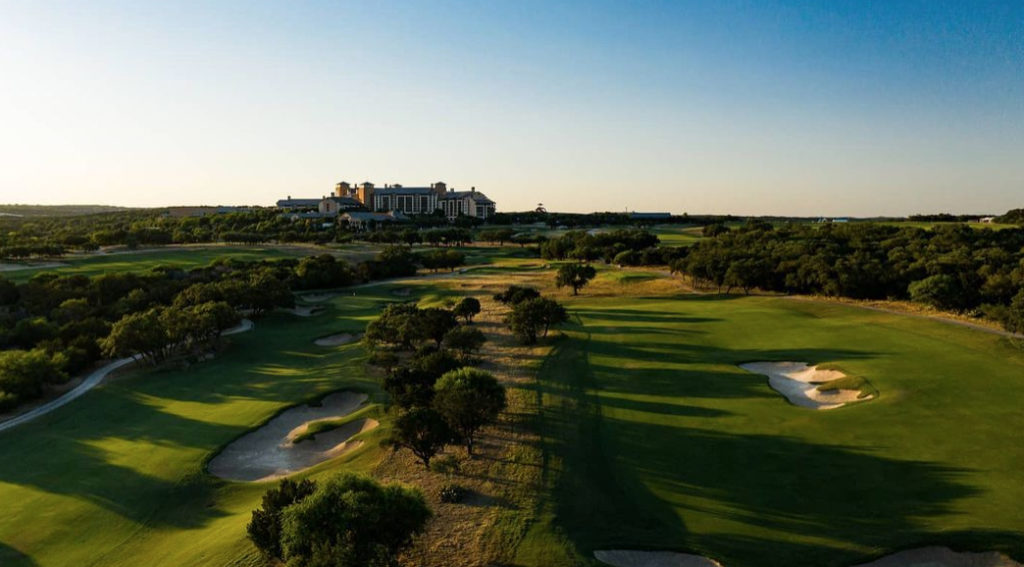
Everything is big in Texas, but even in the Lone Star State there are some things that are really big and absolutely designed to impress with their largess. Such is the case with the expansive JW Marriott San Antonio Hill Country Resort & Spa in the northeast confines of the Alamo City and its two fabulous golf courses at TPC San Antonio.
This resort is renowned for its uber-swanky 1,002-room hotel, its sprawling convention center and meeting spaces, its thrill-a-minute water park and, of course, the golf courses, the Oaks (designed by Greg Norman) and the Canyons (fashioned by Pete Dye).
TPC San Antonio’s Oaks Course is the current home of the Valero Texas Open, which celebrates its 100th anniversary this season in the week prior to the Masters.
Located just 20 minutes from the San Antonio International Airport, the JW Marriott San Antonio Hill Country Resort & Spa offers the beauty of the Texas Hill Country combined with nearby city and luxury-resort conveniences.
The Oaks Course is Tour-tough, with demanding putting surfaces that feed missed approaches into rolling closely mown areas as its first line of defense. The Canyons Course is a little friendlier, a rarity for a Dye-designed course, and is a splendid complement to the Oaks.

TPC San Antonio
Tour-difficulty golf is at the heart of Oaks Course
The Oaks is difficult, and that was part of the plan. Designed by Norman with assistance from Sergio Garcia, the course was blasted out of the rock that defines the site, then built up with mounding, gnarly bunkering, water features and demanding greens complexes. The result is a layout that looks like it’s always been on the spot as it blends seamlessly with the surrounding topography and native vegetation.
Norman’s design philosophy is underscored by environmental sensitivity. Great care was taken to incorporate the distinct nuances and indigenous flora of the site into the course to create a compelling, strategically diverse, and strikingly beautiful venue for golfers.
“The subtleties of the rolling Texas Hill Country terrain and the magnificent stands of mature live oaks helped me create a pristine natural setting that is as playable as it is beautiful,” Norman said.
The Oaks Course was designed for the PGA Tour player, specifically those in the Valero Texas Open, and the average player will feel the strain, especially in the approach game.
The par-72 course plays at 7,435 yards from its back (Tiburon) tees. Noteworthy is its healthy set of par-4s, including five of at least 447 yards. Three of the par-3s stretch at least 207 yards, and two of the four par-5s are longer than 600 yards.
But there is so much more to discuss about the Oaks Course than mere length. Start with the sometimes sheer-faced limestone walls that frame some holes and continue by talking about the need to hit long, high, precise iron shots into just about every green.
Those targets are almost always perched above the fairway, with one of them a shared green (for holes 2 and 7), and another with a bunker in the middle – a la the one 1,200 miles away at Riviera Country Club.
The closer is a 591-yard, question-mark-shaped par-5 that moves right off the tee, then back uphill and left on the layup. The green approach must arc over a creek and miss bunkers short-left and long-left and right.

Canyons is an excellent second option at TPC San Antonio
Due to the differing topography, the Dye-designed Canyons Course has a unique look, feel and playing experience for members and resort guests.
While very different from its tougher, tree-lined onsite sister, the Canyons Course stands on its own as a tournament venue in terms of design, strategy, and beauty. The track played host to PGA Tour Champions’ San Antonio Championship from 2011-2015.
Dye (and design consultant Bruce Lietzke) were given a great piece of ground for the Canyons course that dictates the strategy and design, the latter of which is true to the flow of the land. Sitting at a par-72 and 7,106 yards from the back tees, the course’s corridors provide panoramic views.
Wider and hillier than its Oaks sibling, many of its holes overlook a 750-acre nature preserve. Some who have played the Canyons Course say it doesn’t look like a Dye design, but upon closer inspection, golfers will find plenty of the Scottish pot bunkers the architect is known for as well as a few other wrinkles, including some church pew-style bunkers on the par-4 ninth.
Bermuda grasses were specially selected for this course to provide optimum playing conditions, diversity in color and texture and environmental sensitivity.
The Canyons Course actually runs along the ridges, with strategy dictated by Dye’s trench bunkers. It’s fun and playable, even in a two-club wind, and a challenge for scratch golfers and novices alike with dramatic elevation changes.
There are a few straightforward holes early in the round, but things get interesting on the last four holes.
While many resorts have 36 holes, often the focus and energy are put into one course, while the other is neglected or clearly a second-tier option. You cannot say that about the Canyons at the TPC San Antonio. From a visual standpoint, the Canyons is a much more scenic course, with conditions almost the same as the Oaks, just not quite as fast and firm.
TPC San Antonio also has exceptional practice facilities: a 20-acre complex with six tee decks and numerous target greens. A short-game area has two large stations that replicate course conditions on and around the greens and in the bunkers. And for those needing further help, the facility’s PGA Tour Academy of Golf is as good as found anywhere.
TPC San Antonio was built to be a model of environmentally sound methods and practices and is one of the best-planned eco-friendly layouts you’ll find anywhere.
A closed-loop irrigation system ensures the protection of the Edwards Aquifer, the main water supply for the City of San Antonio and points south and west. Construction called for more than 60,000 tractor-trailer loads of sand, clay, and soil to shape the two courses.
The abundant natural resources neighboring the two courses and resort comprise 900 acres of open space (including a sanctuary that protects the golden-cheeked warbler) and meandering creeks.

Valero Texas Open is a PGA Tour stalwart
The PGA Tour loves San Antonio and having the Alamo City – and its huge charitable contributions – as a tour stop each year.
The Valero Texas Open is the sixth-oldest professional tournament in golf worldwide, the third oldest on the PGA Tour, and the longest to be held in the same city. It boasts a who’s who list of champions including Jordan Spieth, Ben Hogan, Sam Snead, Byron Nelson, and Arnold Palmer, among countless other fan favorites and World Golf Hall of Fame players.
Bob MacDonald won the first event in 1922 at the Brackenridge Park Golf Course. Two players – Palmer (1960, ’61, and ’62) and Texan Justin Leonard (2000, ’01, 07) – won the event a record three times, and nine men have posted more than one victory in the tournament.
Ten of the winners have been from outside the United States, most recently Corey Conners, who is from Canada.
The only six years the tournament was not contested were 1933, 1943, 1968 (when San Antonio hosted the PGA Championship at Pecan Valley), 1971, 1987 (when Oak Hills CC hosted the inaugural Tour Championship), and 2020 (due to COVID-19).
The Valero Texas Open has grown into one of the premier tournaments on the PGA Tour, raising $187 million for charity.

